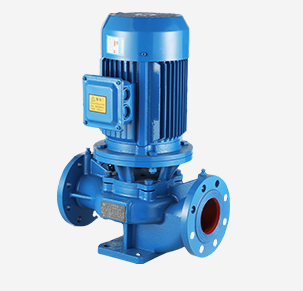Bengali
- Afrikaans
- Albanian
- Amharic
- Arabic
- Armenian
- Azerbaijani
- Basque
- Belarusian
- Bengali
- Bosnian
- Bulgarian
- Catalan
- Cebuano
- Corsican
- Croatian
- Czech
- Danish
- Dutch
- English
- Esperanto
- Estonian
- Finnish
- French
- Frisian
- Galician
- Georgian
- German
- Greek
- Gujarati
- Haitian Creole
- hausa
- hawaiian
- Hebrew
- Hindi
- Miao
- Hungarian
- Icelandic
- igbo
- Indonesian
- irish
- Italian
- Japanese
- Javanese
- Kannada
- kazakh
- Khmer
- Rwandese
- Korean
- Kurdish
- Kyrgyz
- Lao
- Latin
- Latvian
- Lithuanian
- Luxembourgish
- Macedonian
- Malgashi
- Malay
- Malayalam
- Maltese
- Maori
- Marathi
- Mongolian
- Myanmar
- Nepali
- Norwegian
- Norwegian
- Occitan
- Pashto
- Persian
- Polish
- Portuguese
- Punjabi
- Romanian
- Russian
- Samoan
- Scottish Gaelic
- Serbian
- Sesotho
- Shona
- Sindhi
- Sinhala
- Slovak
- Slovenian
- Somali
- Spanish
- Sundanese
- Swahili
- Swedish
- Tagalog
- Tajik
- Tamil
- Tatar
- Telugu
- Thai
- Turkish
- Turkmen
- Ukrainian
- Urdu
- Uighur
- Uzbek
- Vietnamese
- Welsh
- Bantu
- Yiddish
- Yoruba
- Zulu
Telephone: +86 13120555503
Email: frank@cypump.com
আগস্ট . 13, 2024 16:51 Back to list
Understanding Sewage Pump Systems and Storage Tanks for Effective Wastewater Management Solutions
Sewage Pumps and Tanks Essential Components of Wastewater Management
In modern urban infrastructure, effective wastewater management is critical to maintaining public health and environmental sustainability. At the heart of this system are sewage pumps and tanks, which play pivotal roles in transporting and storing sewage efficiently. Understanding how these components work together can shed light on their importance in both residential and commercial settings.
What is a Sewage Pump?
A sewage pump is a type of submersible pump specifically designed to transport sewage from lower to higher elevations, often from the basement of a building to the municipal sewer system. Unlike regular pumps, sewage pumps can handle solid waste, including items like toilet paper and small plastics, which are typically found in wastewater. These pumps are equipped with powerful motors and specially designed impellers that create enough force to move heavy solids through the plumbing system.
Sewage pumps can be categorized into two main types grinder pumps and effluent pumps. Grinder pumps are equipped with a cutting mechanism that fractures solid waste into smaller pieces, making it easier to pump over long distances or into larger sewer systems. Effluent pumps, on the other hand, are suitable for liquid waste with minimal solids and are often used in systems where the sewage needs to be pumped to a higher elevation.
The Role of Sewage Tanks
Sewage tanks, often referred to as septic tanks or holding tanks, serve as temporary storage for wastewater before it is either treated or transported away. In residential systems, septic tanks are a common solution for homes not connected to a municipal sewage system. These tanks allow for the settling of solid waste, allowing cleaner effluent to flow into a drain field for natural filtration into the soil.
The design and capacity of sewage tanks depend on factors such as the size of the household, distance to the drain field, and local environmental regulations. Regular maintenance is crucial; tanks need to be emptied periodically to prevent overflow and contamination of groundwater.
sewage pump and tank

Integration of Pumps and Tanks
The integration of sewage pumps and tanks creates a seamless wastewater management system. When a sewage tank reaches its capacity, the sewage pump is activated, transporting the waste to the designated treatment facility. This process ensures that homes and businesses can dispose of waste efficiently without the risk of backups or overflows.
In larger commercial settings or municipal systems, multiple pumps may be utilized in a series to handle larger volumes of waste. Monitoring systems are often installed to provide real-time data on tank levels and pump performance, enabling proactive maintenance and reducing the likelihood of system failures.
Environmental Considerations
Efficient sewage management is crucial for protecting ecosystems and public health. Poorly managed sewage can lead to significant environmental degradation, including contamination of local water sources and soil. Implementing effective sewage pumps and tanks ensures that waste is handled responsibly, minimizing the risk of pollution.
For eco-conscious consumers, options such as low-energy sewage pumps and environmentally friendly septic systems are increasingly available. These innovations not only reduce energy consumption but also promote sustainable practices in wastewater management.
Conclusion
Sewage pumps and tanks are fundamental components of effective wastewater management systems. Their roles in transporting and storing sewage are crucial in ensuring that urban environments operate smoothly and sustainably. As technology advances, the efficiency and environmental impact of these systems continue to improve, emphasizing the importance of investing in quality sewage management solutions for both residential and commercial applications. Whether you are a homeowner or a business owner, understanding these components can help you better appreciate the infrastructure that supports modern living and protect our valuable ecosystems.
-
Horizontal Split Case Pump with GPT-4 Turbo | High Efficiency
NewsAug.01,2025
-
ISG Series Pipeline Pump - Chi Yuan Pumps | High Efficiency, Durable Design
NewsAug.01,2025
-
Advanced Flue Gas Desulfurization Pump with GPT-4 Turbo | Durable & Efficient
NewsJul.31,2025
-
ISG Series Vertical Pipeline Pump - Chi Yuan Pumps | Advanced Hydraulic Design&Durable Construction
NewsJul.31,2025
-
ISG Series Vertical Pipeline Pump - Chi Yuan Pumps | Energy Efficient & Low Noise
NewsJul.31,2025
-
pipeline pump - Chi Yuan Pumps Co., LTD.|High Efficiency&Low Noise
NewsJul.31,2025










